What is an Electronic Voting Machine (EVM)
- An Electronic Voting Machine (EVM) is a device used for recording and tallying votes in an election.
- It is an electronic device designed to make the process of voting more efficient, accurate, and secure compared to traditional paper-based voting systems.
- EVMs are used in various countries around the world, and their specific designs and features may vary.
- Key components of an Electronic Voting Machine typically include:

Control Unit:
- The control unit is the main processing unit of the EVM.
- It controls the overall functioning of the machine, manages the authentication of voters, and records the votes cast.
Balloting Unit:
- The balloting unit is the component through which voters cast their votes.
- It typically displays the list of candidates and their respective symbols.
- Voters make their selections by pressing the button or using a similar interface.
Voter-Verifiable Paper Audit Trail (VVPAT) (optional):
- In some EVMs, a Voter-Verifiable Paper Audit Trail (VVPAT) is included.
- It provides a printed paper receipt of the vote cast by the voter, allowing them to verify their choice before it is electronically recorded.
- VVPAT adds an extra layer of transparency and helps in auditing the electronic results.
Battery or Power Source:
- EVMs are powered by batteries or an external power source.
- The power source ensures the proper functioning of the machine throughout the voting process.
Display and Buttons:
- The EVM includes a display screen that shows the names and symbols of the candidates and their respective political parties.
- Voters use buttons or a similar interface to select their preferred candidate.
Process of voting using an EVM
The basic process of voting using an EVM involves the following steps:
- A voter enters the polling booth and presents themselves to the election officials.
- The election official verifies the voter’s identity and eligibility to vote.
- The voter is then allowed to cast their vote by pressing the button next to the candidate’s name and symbol on the balloting unit.
- The EVM records the vote electronically.
After the voting process is complete, the EVM is sealed, and the electronic data is used to tally the votes. The results can be obtained quickly and accurately.

- Voting Process: When a voter casts their vote using an EVM, the machine records the vote electronically.
- Paper Trail: Simultaneously, the VVPAT attached to the EVM generates a paper slip that displays the candidate’s name and symbol voted for by the voter.
- Verification: The voter can visually verify the printed slip to ensure that the vote has been cast as intended.
- Paper Slip Storage: The printed paper slip is then stored in a sealed container within the VVPAT machine.
Details Chips used in Electronic Voting Machines (EVM)
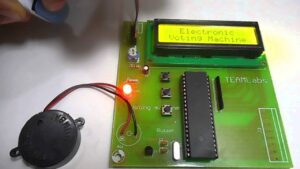
Microcontroller 8051 for EVM
- The Electronic Voting Machine uses Microcontroller 8051 as its brain.
- This types of EVMare is designed for Eight contestants.
- Voters can poll their vote to any one of the contestant.
- In this EVM one port is dedicated for push button
switches for eight contestants, master switch for polling officer
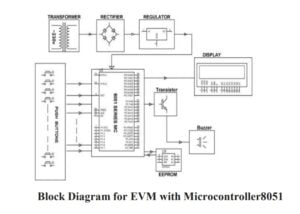
- The Electronic Voting Machine is built with a transformer (230 – 12 V AC), voltage regulator (LM 7805), rectifier, filter,
microcontroller (at89s52/at89c51), led, push buttons, buzzers, BC547, 1n4007, resistor and capacitor. - The 230V AC power supply is the first step down to 12V AC using a step-down transformer. T
- his is then converted to the
DC using a bridge rectifier. - The AC ripples are filtered out by using a capacitor and given to the input pin of the voltage
regulator 7805.At the output pin of this regulator, we get a constant 5V DC which is used for MC and other ICs in this
project.
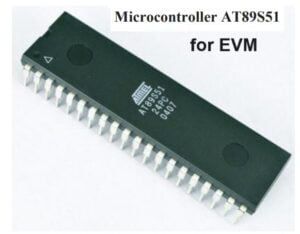
How Does EVM Function in Programming?
- The EVM codes execute the given code code deterministically in their small chips. Data is stored in the control units.
- A particular smart contract will always produce the same output for the same input.
- It does not matter where the smart contract is executed or who is executing it, the output will always be consistent for a particular input.
- EVMs are stationary machines
- Its functioning is not affected by radio frequency transmission device features, operates on battery packs, and cannot be reprogrammed as per the ECI.
- Its coding can be tampered with some functions by the people of ECI to win critical cases when there is a less gap between candidates.
- This is due to lack of transparency in the source code of EVM by any independent software engineers
- The VVVPAT papers have thermal prints and can be visible up to 3 weeks
- The Control Unit of EVMs has a real-time clock that logs every event on its right from the time it was switched on.
- The anti-tamper mechanism in the machine can detect even 100-millisecond variations.

Which software is used in Electronic Voting Machine (EVM)
- Electronic Voting Machines (EVMs) use a combination of hardware and software to ensure secure, reliable, and efficient voting processes.
- The specific software used can vary depending on the country and the manufacturer, but common components and types of software used in EVMs include:
-
- Firmware:
- This is the embedded software that directly controls the hardware components of the EVM.
- It is often custom-designed for the specific EVM model and handles the basic operations like ballot selection, vote recording, and vote tallying.
- Operating System:
- Some EVMs may use a lightweight, secure operating system to manage the software applications.
- This OS is usually highly specialized and stripped down to minimize vulnerabilities.
- Application Software:
- This includes the user interface that voters interact with, as well as the software used by election officials to set up the machine, configure ballots, and retrieve vote counts.
- This software ensures the proper functioning of the voting process, from displaying candidates to storing votes securely.
- Security Software:
- This includes encryption tools, digital signatures, and other security mechanisms to protect the integrity of the voting data and prevent tampering.
- Diagnostic Software:
- Used for testing and maintaining the EVMs to ensure they are functioning correctly before and during the election.
- Firmware:
Examples of specific software and systems
Examples of specific software and systems used in different countries include:
- India: The Electronic Voting Machines used in India are developed by the Electronics Corporation of India Limited (ECIL) and Bharat Electronics Limited (BEL). They use proprietary firmware and application software tailored to Indian election requirements.
- United States: Different states and counties may use different systems such as Dominion Voting Systems, Election Systems & Software (ES&S), and Hart InterCivic. These systems have their proprietary software suites designed for various election tasks.
- Brazil: The voting machines used in Brazil are developed by the Tribunal Superior Eleitoral (TSE) and use specific software for voter authentication, vote recording, and tallying.
These systems are generally closed-source to protect against tampering, but they undergo rigorous testing and certification processes to ensure their reliability and security.
EVM VVPAT Verification Issue
- Voter Verifiable Paper Audit Trail (VVPAT) is a method used with Electronic Voting Machines (EVMs) to allow voters to verify that their votes have been correctly recorded by the EVM.
- The verification of VVPAT (Voter Verifiable Paper Audit Trail) is crucial in ensuring the integrity and transparency of the electoral process.
- However, like any system, there can be challenges or issues related to VVPAT verification. Here are some common issues that may arise:
Technical Malfunctions:
- Sometimes, VVPAT machines may experience technical malfunctions, such as paper jams or printing errors,
- which can affect the accuracy of the paper trail.
Human Error:
- During the verification process, human error can occur, leading to mistakes in counting or recording the VVPAT slips.
Sampling Errors:
- The random selection of VVPAT slips for counting may not always represent the overall voting pattern accurately, leading to potential discrepancies.
Tampering or Manipulation of VVPAT
- Tampering or manipulation of Voter Verifiable Paper Audit Trail (VVPAT) in Electronic Voting Machines (EVMs) is a serious concern that can undermine the integrity and credibility of the electoral process.
- Here are some potential ways in which tampering or manipulation of VVPAT in EVMs could occur:
- Physical Tampering: Unauthorized access to VVPAT machines or EVMs can lead to physical tampering, such as altering the printed VVPAT slips or manipulating the internal components of the machines.
- Malware or Software Manipulation: Sophisticated attackers may attempt to introduce malware or manipulate the software of EVMs to tamper with the VVPAT process, such as printing incorrect VVPAT slips or altering electronic votes.
- Insider Threats: Individuals with access to EVMs or VVPAT machines, such as election officials or technicians, may pose a risk of insider threats by tampering with the machines or manipulating the verification process.
- Network Vulnerabilities: If EVMs are connected to a network for any purpose, such as transmitting results, vulnerabilities in the network infrastructure could be exploited to tamper with VVPAT data.
Solution to VVPAT Issues in EVM
- To address these risks and enhance the security of VVPAT in EVMs, election authorities and technology experts implement various measures:
- Physical Security: Implementing strict physical security measures to prevent unauthorized access to EVMs and VVPAT machines.
- Encryption and Authentication: Using strong encryption techniques and authentication mechanisms to protect VVPAT data and prevent unauthorized alterations.
- Regular Audits and Testing: Conducting regular audits and testing of EVMs and VVPAT machines to detect any anomalies or signs of tampering.
- Transparency and Oversight: Ensuring transparency in the electoral process by allowing independent observers, political parties, and civil society to oversee and verify the functioning of EVMs and VVPAT systems.
-
- Regular maintenance and testing of VVPAT machines to minimize technical failures.
- Training election officials and observers to conduct accurate and transparent VVPAT verification.
- Implementing strict security protocols to prevent tampering or manipulation of VVPAT slips or EVMs.
- Conducting audits and reviews of the VVPAT verification process to identify and rectify any issues or discrepancies.
Overall, maintaining transparency, accountability, and adherence to established protocols are essential in addressing and mitigating VVPAT verification issues during elections.
Advantages of EVM in election
- Electronic Voting Machines (EVMs) offer several advantages in the electoral process as the Election Commission of India site, contributing to efficiency, accuracy, and transparency.
- Here are some of the key advantages of using EVMs in elections:
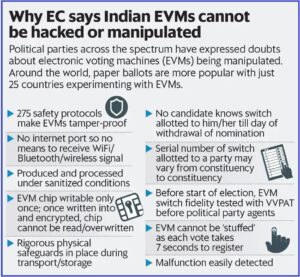
Faster Results:
- EVMs enable quicker and more efficient counting of votes compared to traditional manual counting methods.
- Results can be available shortly after the voting process concludes, reducing the time needed to declare election outcomes.
Reduced Errors:
- EVMs minimize the chances of human errors associated with manual vote counting, such as miscounting or misinterpretation of voter intent.
- This can lead to more accurate and reliable election results.
Cost Savings:
- Over the long term, EVMs can be cost-effective as they eliminate the need for printing and transporting paper ballots.
- The costs associated with manual counting, storage, and transportation of paper ballots are also reduced.
Minimized Invalid Votes:
-
- EVMs often include features that help prevent invalid votes, such as warning messages for overvoting or the casting of multiple votes in a single race. This contributes to the accuracy of the electoral process.
Easier for Voters:
-
- Using EVMs is generally considered user-friendly, and voters find it easier to cast their votes electronically. This can be particularly beneficial for voters with disabilities, as many EVMs are designed to accommodate diverse needs.
- Environmental Impact:
- The shift to EVMs reduces the environmental impact associated with the production and disposal of paper ballots. Electronic voting eliminates the need for large quantities of paper, ink, and other resources used in traditional voting systems.
- Prevention of Booth Capture:
- EVMs can contribute to preventing booth capture or manipulation by ensuring that each voter can cast only one vote, and the votes are accurately recorded without interference.
- Enhanced Security Measures:
- When properly implemented and maintained, EVMs can incorporate advanced security features, such as encryption and secure transmission of results. This can help protect the integrity of the election process.
Reduced Waiting Time:
- EVMs can streamline the voting process, reducing the time voters spend at polling stations.
- This can lead to shorter queues and a more efficient overall voting experience.
Easy Data Retrieval:
-
- Electronic storage of voting data facilitates easy retrieval and analysis of election results. This can be valuable for electoral authorities, political analysts, and researchers studying voting patterns.
Improved Accessibility:
- EVMs can be designed to accommodate various accessibility needs, including features for visually impaired voters or those with physical disabilities.
- This contributes to a more inclusive electoral process.

Deterrence of Voter Intimidation:
- EVMs can help deter voter intimidation tactics, as the secrecy of the voting process is maintained through electronic means, reducing the likelihood of coercion or undue influence.
- While EVMs offer these advantages, it is crucial to address concerns and challenges associated with their use, such as security vulnerabilities and the need for transparency to maintain public trust in the electoral process.
- Ongoing evaluation and improvement of EVM technology are essential to ensure the integrity of elections.
Disadvantage of Electronic Voting Machines (EVM)
- Electronic Voting Machines (EVMs) have banned in many developed countries like USA, Gemrnay, and Japan, even it is used in India, the United States, and various other countries. Its hacking is possible and presented in the demo of 2010 in the media.
- While EVMs offer several advantages, they also have some disadvantages that have been a source of concern for critics.
- Some of the perceived disadvantages of EVMs in elections include:
Vulnerability to Hacking:
- Critics argue that EVMs are susceptible to hacking or tampering, raising concerns about the security and integrity of the electoral process.
- If an adversary gains access to the EVMs, they could potentially manipulate the results.
- There are many modern ways of Hacking the chips with programs

Lack of Transparency:
- EVMs operate using proprietary software, and the source code is often not disclosed to the public.
- This lack of transparency can lead to mistrust among voters and political parties who may question the accuracy and fairness of the voting process.
- Chips are imported but not disclosed to voters
- Its source code is not known to be verified publicly
- The is no independent verification of tamper proof
Limited Voter Verification:
- Unlike traditional paper-based systems where voters physically mark their choices on a ballot, EVMs provide limited means for voters to verify that their votes have been accurately recorded.
- This can lead to concerns about the possibility of votes being miscounted or manipulated without detection.
- No record or proof is given to voters which is dangerous to democracy
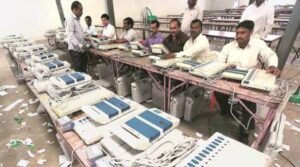
Machine Malfunctions:
- EVMs are electronic devices and can be prone to technical malfunctions.
- Critics argue that malfunctions or glitches in the machines could lead to lost or miscounted votes, potentially influencing the outcome of an election.
Cost and Maintenance:
- The initial cost of acquiring EVMs and the ongoing expenses related to their maintenance can be significant. Some argue that the funds spent on EVMs could be utilized for other pressing needs in the electoral process or public services.
Dependence on Electricity:
-
- EVMs require a stable electricity supply to function. In areas with unreliable power infrastructure, the use of EVMs may pose challenges, potentially leading to disruptions in the voting process.
Accessibility Concerns:
- EVMs may not be accessible to all voters, including those with disabilities.
- Ensuring that the voting process is inclusive and accommodating for all citizens is crucial for a fair and democratic election
Limited Auditability
- Some critics argue that EVMs may lack sufficient auditability, making it challenging to conduct post-election audits and verify the accuracy of the results.
- Many EVMs are not checked in properly
- Many EVMs are carried out and updated irrespective of transparency
Lack of Standardization:
-
- Diversity in Systems: Different regions or countries may use different EVM models or systems, leading to a lack of standardization. This can make it difficult to implement uniform security and auditing procedures.

What is EVM Tampering?
- EVM tampering refers to any deliberate, unauthorized, or malicious alteration of Electronic Voting Machines (EVMs) used in elections.
- Tampering can take various forms and can occur at different stages of the electoral process, including manufacturing, transportation, storage, and during the actual voting process. Supreme Court of India issued a notice to Election Commission in 2017 to add VVPAT but they do not count the ballot papers.
- Here are some examples of EVM tampering:

EVM tamper SC notice
Manipulating Software or Firmware:
- Tampering with the software or firmware of EVMs can alter the way votes are recorded, stored, or transmitted.
- Hackers or malicious actors may attempt to exploit vulnerabilities in the software to manipulate election results.
Physical Tampering:
- EVMs can be physically tampered with to manipulate votes or compromise their integrity.
- This could involve opening the machines and making unauthorized modifications, such as replacing components or installing malicious hardware.
Interception of Communication:
- Some EVMs may transmit data wirelessly or via other communication channels.
- Tampering can occur if unauthorized individuals intercept or manipulate these communications to alter vote counts or compromise the security of the system.
Malicious Code Injection:
- Tampering can involve injecting malicious code into EVMs to alter their behavior during the voting process.
- This code could be designed to manipulate votes, compromise security features, or disrupt the operation of the machines.
Insider Threats:
- Individuals with authorized access to EVMs, such as election officials or technicians, may engage in tampering either for personal gain or under external pressure.
- Insider threats pose a significant risk to the integrity of the electoral process and require robust security measures to mitigate.
- Efforts to prevent and detect EVM tampering typically involve a combination of technical safeguards, physical security measures, rigorous testing and certification processes, transparent audit trails, and public oversight.
Conclusion
- It’s important to note that the implementation and features of EVMs can vary from country to country.
- Some EVMs may have additional security features, such as encryption and secure transmission of results, to ensure the integrity of the electoral process.
- Public trust in the accuracy and security of EVMs is crucial for the successful adoption of electronic voting systems.
- It’s important to note that while these concerns exist, many electoral authorities and proponents of EVMs argue that technological advancements and proper safeguards can address these issues and enhance the overall integrity and efficiency of the electoral process.
- Additionally, different countries may have varying experiences and opinions regarding the use of EVMs in elections.
- Election authorities and independent organizations responsible for overseeing elections must remain vigilant to ensure the integrity and credibility of the electoral process. Any credible allegations of EVM tampering should be thoroughly investigated, and appropriate actions should be taken to address any breaches of security or misconduct
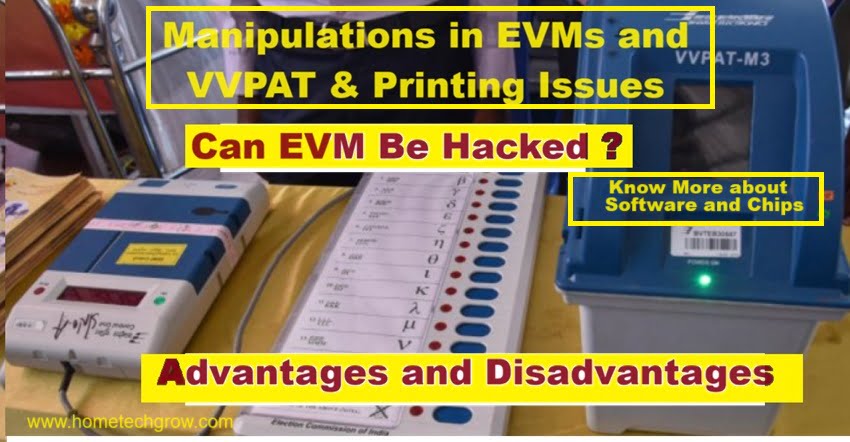
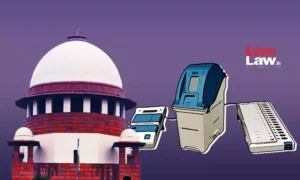
If voters not trust with EVM it will be Banned no doubt.